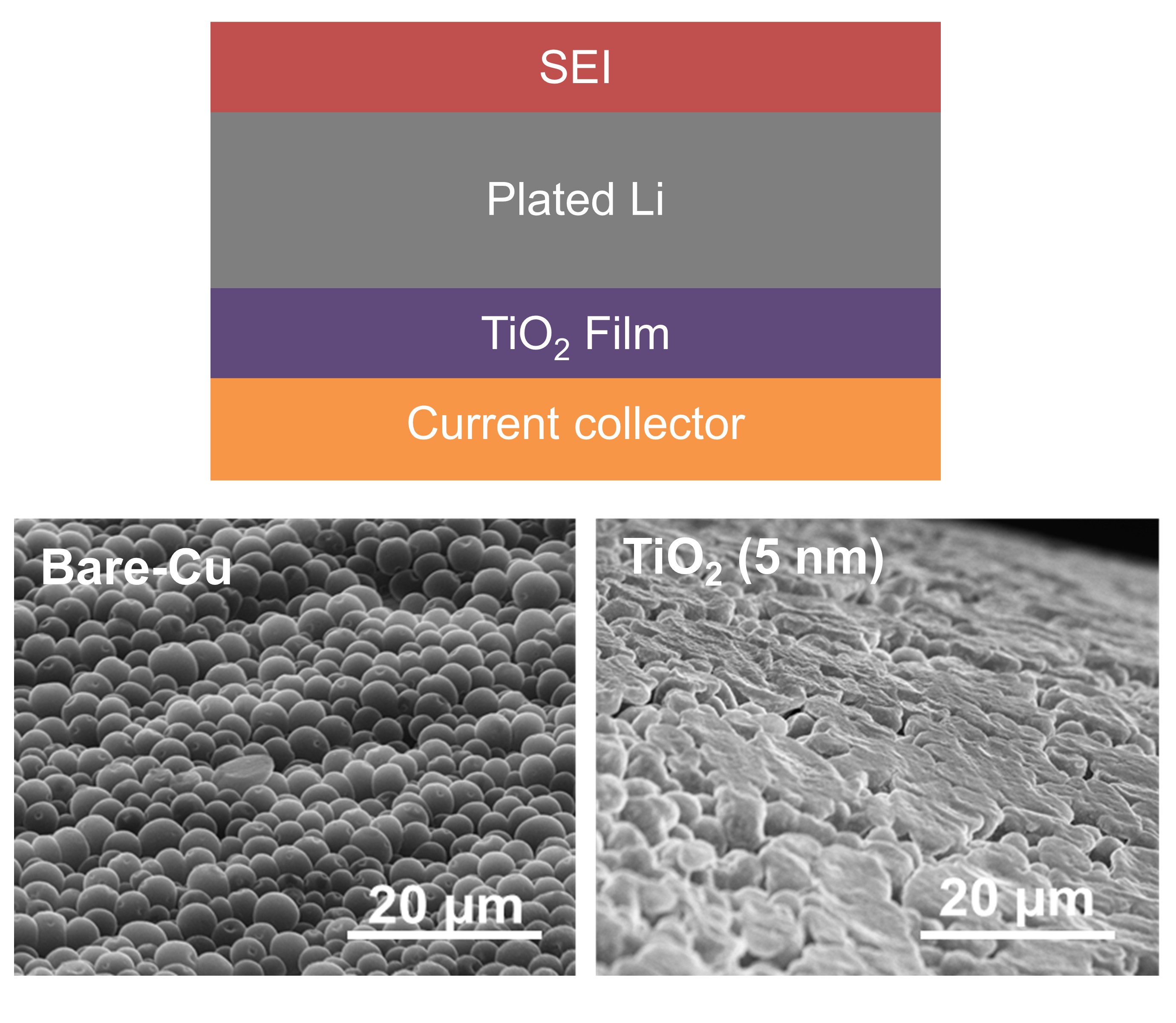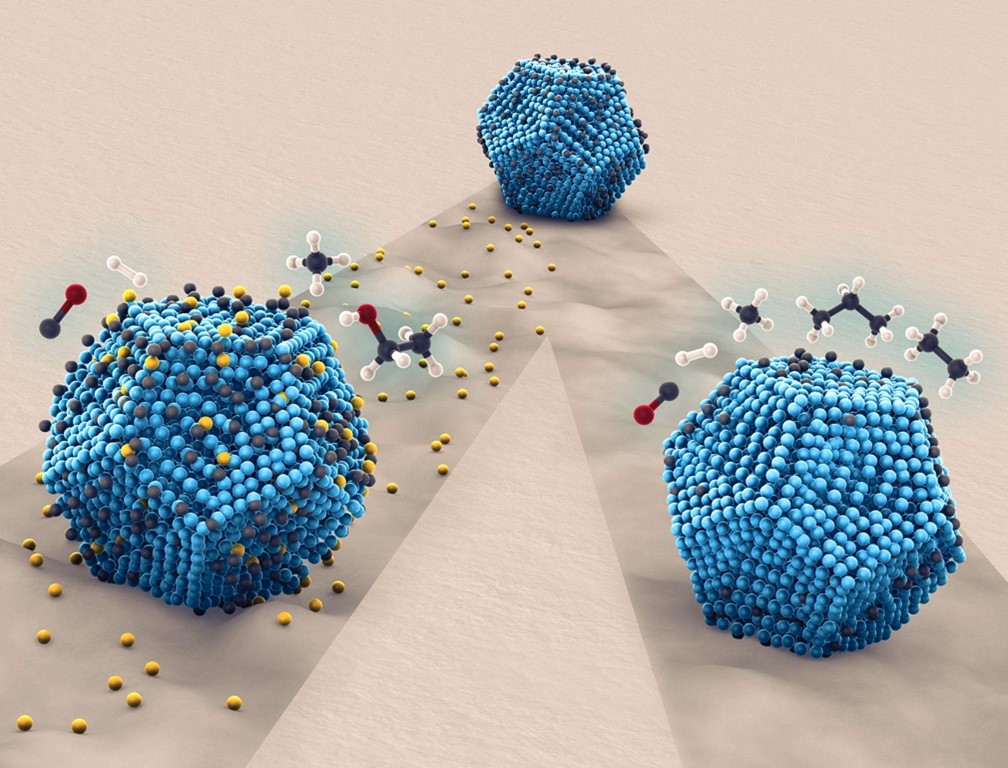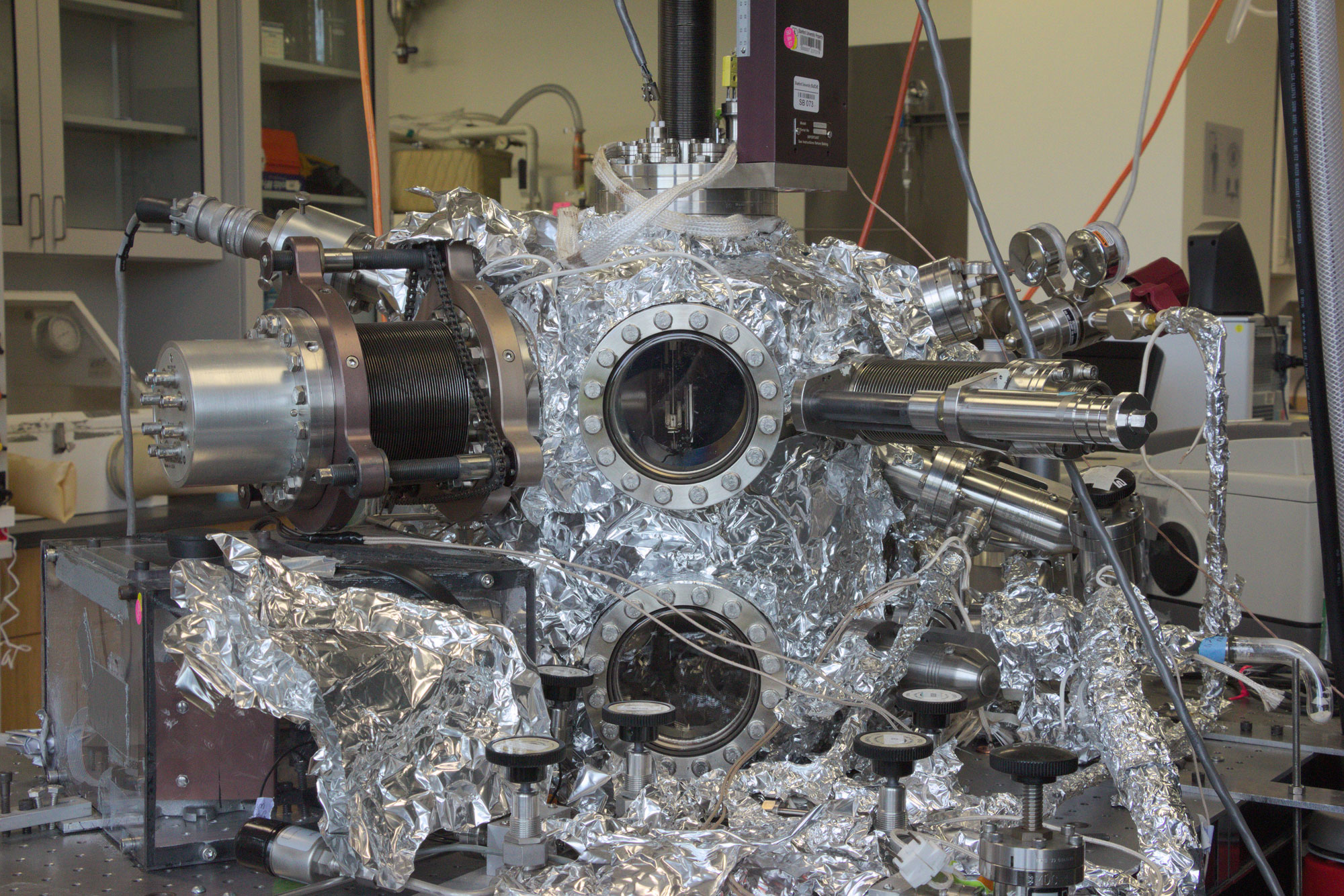Research Area: Lithium Batteries and Catalysis
The mismatch in the demand and supply of renewable energy must be addressed using reliable high energy storage systems. One promising energy storage system is the lithium metal battery (LMB), owing to the high gravimetric capacity of lithium (3860 mAh/g). The potential gain in volumetric and gravimetric energy density offered by LMBs could usurp today's lithium-ion battery technology and revolutionize energy storage. However, the lifetime of LMBs is hindered by morphological instabilities experienced during the electrodeposition of lithium. To control the electrodeposition of lithium metal, our group has introduced a novel architecture in which thin films are situated between lithium and the current collector. Our films are purposely designed to possess specific properties using atomic layer deposition (ALD). Our lab currently investigates the effects of those film properties on the electrodeposition of lithium. Specifically, we examine how thin films impact the nucleation and growth of lithium and thereby influence the performance of lithium metal batteries. Our group also applies molecular layer deposition (MLD) grown thin films towards the control of lithium electrodeposition.

Top: Li electrodeposition control architecture with a TiO2 thin film situated between lithium and the Cu current collector. Bottom: Different morphologies of lithium electrodeposited on bare Cu and TiO2-modified Cu
There is an increasing demand for low-cost, efficient pathways to make fuels as well as everyday products. Catalysts can drive the selectivity of chemical reactions towards desired products, but there is often a tradeoff between selectivity and activity. Additionally, traditional synthesis techniques can introduce ambiguity when it comes to understanding the specific role of different catalyst properties on their performance. Our current work focuses on syngas (CO +H2) reactions to higher oxygenates (e.g., ethanol) with additional work investigating strategies for the production of fuels and high value chemical feedstocks. We use ALD as a strategy to design and study thermal heterogeneous catalyst structure-property relationships with precise, atomic-level control. We combine ex-situ characterization with in-situ synchrotron techniques to conduct fundamental studies on the role of ALD promoters on transition metal catalysts.

Sodium impurities promote and stabilize Co and Co2C catalysts for syngas conversion
